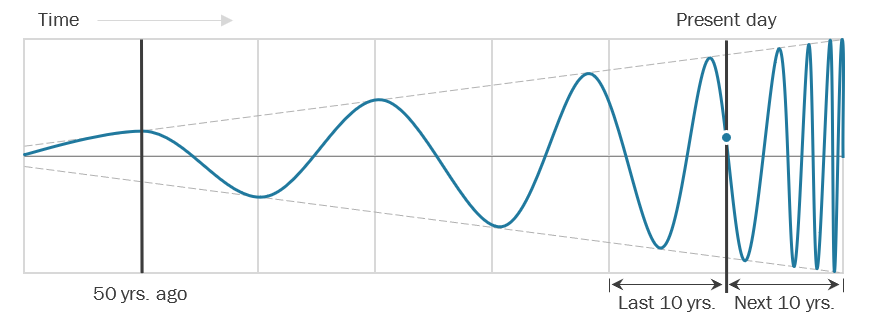Charting our LegalTech Future
October 08, 2020
legal tech liam brown innovation & technology
Part I: What Does the Past Tell Us About Our Future?
We are voyagers
We are sailing into the future. To successfully navigate there, we need to know where we started, decide where we want to go, be realistic about the resources at our disposal, and understand the forces acting on us along the way.
I believe technology will help us get there, but it won’t if we don’t choose wisely – or we don’t choose at all.
As the founder and leader of a law company that builds legal software and provides legal services augmented by technology, I care greatly about legal tech. Elevate’s strategy depends upon legal tech, and I constantly scan the horizon for trends, insights, and ideas that will be useful to our customers and us.
Anyone tracking developments in the field faces a paradox. FOMO (Fear of Missing Out) leads some to focus on today’s shiny new object, even though it may nonetheless end up on tomorrow’s scrapheap of ‘brilliant ideas that were ahead of their time.’ And yet, sometimes new legal software does indeed become an essential business tool, which we come to take for granted.
Compounding the paradox is the reality that there is no ‘one-size-fits-all’ framework for evaluating legal tech to help plan our route to the future and course-correct as our journey unfolds. Still, as someone with a vested interest in this topic, I’d like to share my thoughts.
The journey so far
As Bill Gates said, “In the next ten years, business will change more than it did in the previous fifty.” Technology has brought massive change to almost every industry, and the pace of change is increasing.
Consider the last fifty years of legal tech history:
|
50 |
All legal documents were paper, all phones had cords, the internet didn’t exist, the majority of lawyers couldn’t type, and books were the only way to search case law. |
|
45 |
A very small percentage of lawyers were able to search case law electronically, using the Lexis UBIQ terminal (introduced in 1973). |
|
40 |
Law firms began using fax machines, and IBM was about to introduce the first “personal computer” (in 1981). |
|
35 |
A few lawyers were just starting to create documents using personal computers, mostly on systems where file-sharing required physically moving floppy disks from computer to computer. |
|
30 |
Networked databases enabled law firms to index complex litigation matters that previously would have been nearly impossible to handle manually. |
|
26 |
The first law firm website was launched. |
|
24 |
The Law Society of England and Wales denounced Richard Susskind’s prediction that email would become the primary mode of communication between lawyers and clients. |
|
20 |
LegalZoom was launched online (2001), and the first Blackberry device was launched. |
|
15 |
The first version of the Electronic Discovery Reference Model (EDRM) was published. The beta version of Google Scholar was released a year later (2004), making hundreds of millions of cases, filings, and research articles searchable and free. |
|
13 |
The first iPhone was released, followed by the first iPad three years later. Lawyers began using smartphones and tablets for work. |
|
10 |
Technology-assisted review (TAR) was first used. US Magistrate Judge Peck issued his first opinion endorsing TAR two years later. |
|
7 |
Blockchain-based “Smart Contracts” began to appear. |
|
6 |
Information processing volume in the Cloud surpassed the on-premise volume in traditional IT environments in companies and firms. |
|
3 |
Investment in legal technology was $233 million; the following year (2018), it catapulted to $1.7 billion. |
|
2 |
95% of all lawyers were using smartphones for work. (ABA Legal Technology Survey Report, 2018) |
|
1 |
The Global Legal Blockchain Consortium grew to 250 members, including large companies, law firms, software companies, and universities, all collaborating to develop standards that will govern the use of blockchain technology in the business of law.
And The first legal tech “app store” launched with backing from 18 of the largest law firms in the US and UK. |
Speed of travel
Futurist Ray Kurzweil examines the accelerating rate of technology change, with a great deal of supporting data, in his essay, “The Law of Accelerating Returns.” (Kurzweil, Ray. “The Law of Accelerating Returns.” 2001. Found online here)
A simple way to visualize this concept is to picture changes as a series of waves that are increasing in frequency, like Figure 1 below.

Fig. 1: Change increasing in frequency
The more frequently changes occur, the more their effects overlap, amplifying the net impact. Conceptually, this can be visualized as a wave increasing in both frequency and amplitude, as shown in Figure 2.

Fig. 2: Change increasing in both frequency and amplitude
Looking at both of these illustrations, it’s easy to see what Bill Gates meant in predicting that business will change more in the next ten years than it did in the previous fifty!
With the pace of change ever-accelerating, it seems prudent to figure out where it’s taking us! Rather than predicting specific destinations, let’s think about the general direction of travel. I delve into that topic in Part II of this series.
Back to Expertise


